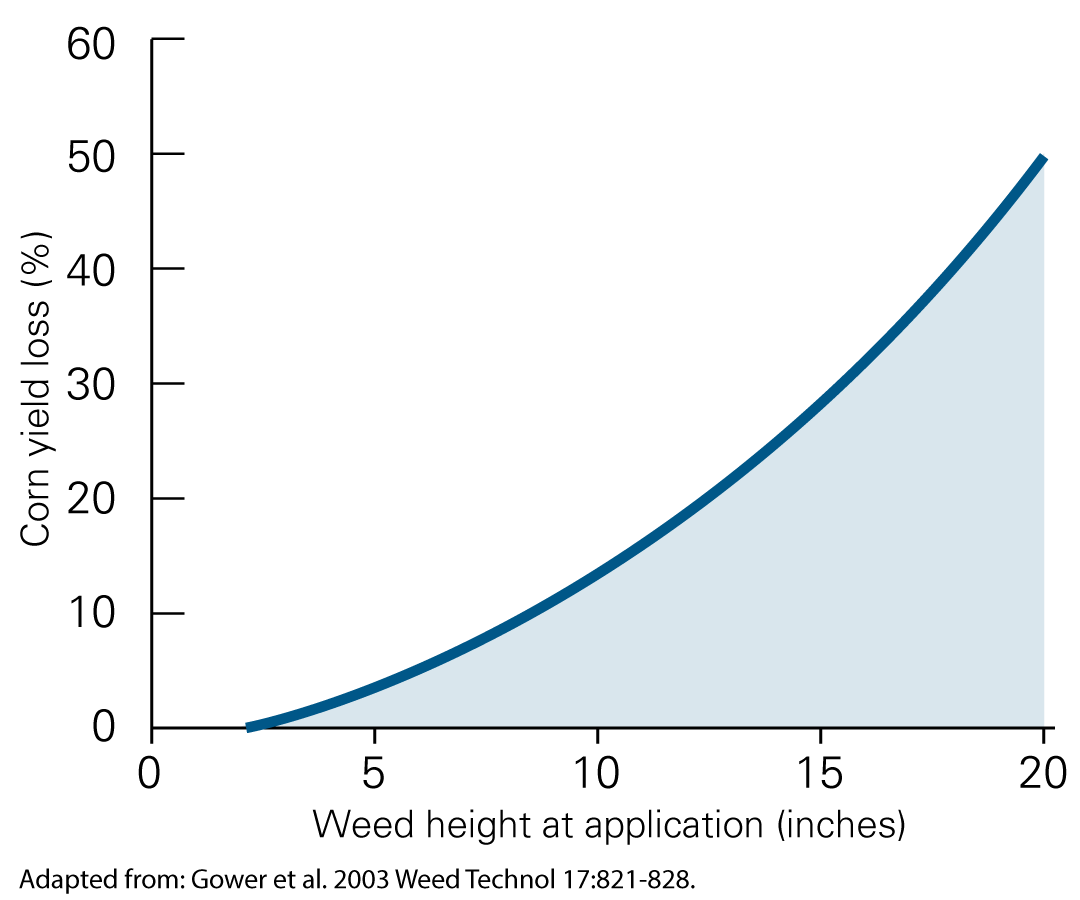Decisions, decisions. How do you know you’re making the right one?
Strip-tillers are constantly evaluating the return on investment for their businesses, from farm buildings to equipment to agronomy inputs.
“It is important for farmers to have a clear picture of their costs before making a decision,” says Wade Firestone, marketing manager with HELM Crop Solutions. “But often there are hidden costs that are overlooked, especially in weed management programs.”
Hidden costs are like holes in a ship — little leaks can slowly sink it and have a large effect on your bottom line.
Here is a 5-step system for managing hidden costs. While this example focuses on weed control, the system can be applied across many farming and business management areas.
Step 1: Identify Hidden Costs
It is important to accurately identify problems in order to address them. Where are the costs or inefficiencies you haven't evaluated before?
“In weed control, the major hidden cost is competition. Weeds compete for light, nutrients and water in the soil,” says Firestone. “Weed competition can be costly, but it can be difficult to quantify or directly observe. You can’t physically see the 5 bushels you lost by applying your herbicide too late.”
Weed competition can cause stunting in soybeans or unevenness in corn stands, resulting in yield loss.
Step 2: Quantify & Estimate Costs
Estimates, while imprecise, can serve as a “gut check” when evaluating agronomy input costs. Here is a method for calculating the approximate cost of weed competition in corn.
Weed Height at Time of Herbicide Application

“The difference between eliminating weeds at 5 inches and 10 inches might not seem like a lot, but it represents around a 10% difference in yield. In a corn field with 200-bushel yield potential, that’s 20 bushels,” says Firestone. “If the corn price is $4.25, multiply that by 20 bushels and you get $85 per acre of potential revenue loss.”
These are only the direct costs of the weed pressure in this example field. Insufficient weed control can also result in:
- Rescue herbicide treatment
- Harvest delays due to standing weeds
- Weed seeds overwintering to next season
These costs quickly exceed the $85 per acre initial cost estimate.
Step 3: Decide on Program & Price
Next, it’s time to create a game plan for managing weed competition. It is crucial to make the most out of your herbicide program by following these guidelines:
- Design a herbicide program with multiple modes of action to control tough weeds. You don’t want to spend the money on a rescue treatment, so take time to plan an effective weed management strategy.
- Select the right adjuvant to pair with your herbicides. What does the label recommend for maximum efficacy?
- Get weeds while they're small. Consider using a burndown or pre-emergent product such as Reviton for a clean start without weed competition before planting.
- Ensure mixability by conducting a jar test prior to application. You don’t want to slow down your sprayer and miss critical application windows.
- Use the correct nozzles and droplet sizes. For contact herbicides, such as Reviton, coverage is key.
- Apply your herbicides in the correct weather conditions for maximum efficacy.
- Always follow labels and use them as a main source of information for all products being applied.
Step 4: Calculate ROI Again with Updated Figures
Using your estimates, run your calculations again. How does it pencil out? Does a higher-priced weed control program look like a better investment now that all costs are accounted for? Or is it still too expensive to manage the issue, even with hidden costs considered?
“No matter which direction the exercise takes you, you will have a better understanding of your weed control program and the risks involved with missed or untimely applications,” says Firestone. “You have completed a decision-making process that will ultimately benefit your balance sheet.”
Step 5: Evaluate Your Decision
It can be hard to know if you made a good decision without examining the results.
Ask yourself:
- What happened because of the changes you made?
- Did the herbicide program manage your target weeds?
- Were there benefits on the yield monitor or in the grain bin?
Answering these questions will help you optimize your program for future seasons.
Looking Forward
As you prepare for next season, take a closer look at business areas where you could be incurring hidden costs beyond weed control. As you’re looking for higher operational efficiency and profit levels, hidden costs may be easier to find than you think.
Related Content
Study Shows Repeated Glyphosate Accelerates Weed Resistance
4 Steps for Clean Soybean Fields in 2024
UPDATE: EPA Allowing Farmers to Use Existing Stocks of Dicamba




